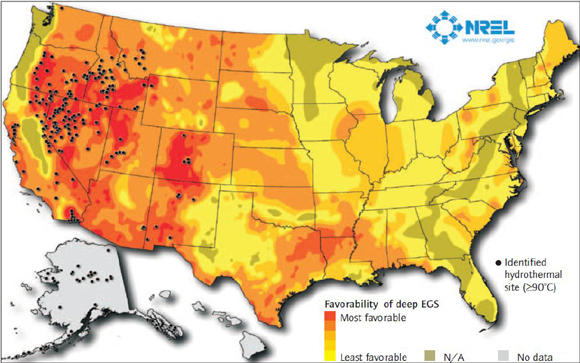ZGE TECHNOLOGY OVERVIEW
The overview is a brief 11-page introduction to our innovative geothermal technology as submitted for 2024 EARTHSHOT PRIZE consideration.
A critical, though not often discussed economic component of supercritical energy, at least indirectly, in terms of cost is corrosion resistance of metal component parts for a sealed, supercritical system. ZGE has been following R & D regarding the corrosion response of various materials within a supercritical water (SCW) environment for some time. Of recent note, we refer you to a Science Direct article citing Annals of Nuclear Energy, Volume 127, pages 351 – 363, dated May 2019 entitled Resistance of Candidate Cladding Material for Supercritical Water Reactor, summarizing studies conducted at Shanghai Jiao Tong University. This work concerns corrosion test results for candidate materials such as ferritic/martensitic (F/M) steel, austenitic stainless steel, alumina-forming austenitic (AFA) stainless steel and oxide dispersion strengthened (ODS) steel. Results suggest high Cr content austenitic stainless steel, proper Cr content AFA stainless steel, and ODS steel are promising cladding materials for SCW conditions as they each demonstrate satisfactory corrosion resistance up to 650°C. Note this research as cited, relates to water reactors specifically, but applies directly to our supercritical process as well.
ZGE conceptual estimates suggest the capital cost for a new 540 MW power plant, using sealed, supercritical wells with Non-Partitioned, Convective Flow in a shallow high-heat area to be approximately $650 – $700 million depending on location. Assuming Operation and Maintenance expenses (2023 data) of $0.004/kWh and depreciation of $0.004/kWh, the average cost of power from such a plant over time would be ± $0.008/kWh.
Note that deep drilling costs vary per geographic location. This estimate for a 540 MW plant assumes 15 wells (non-partitioned convective heat exchange cylinders) drilled at 6,000 vertical meters each. Worksheet production and cost calculations are predicated on maintaining supercritical temperature/pressure conditions in the pressurized Exchange Chamber at all times for maximal power production, though the ZGE Closed System can operate cost competitively at lower temperatures and pressures.
8,000 m – 10,000 m is the maximum range for economically feasible drilling depths. More favorable drilling depths in the range of 4km to 6km can be found in geothermally favorable areas such as Central Arizona, Northern California, Northern Nevada, Southeastern Oregon, Southeastern Idaho, Northwestern Utah, West-Central Colorado and Northwestern Wyoming. Note the Yellowstone National Park area is off-limits for geothermal energy harvesting. {Favorable equates to higher subsurface temperatures at relatively shallow drilling depths. Please refer to the NREL Map provided below.} Note: Many tectonically active areas experience magma intrusions where temperatures of 500°C to 1,000°C are reached at depths as shallow as ± 4,000 meters – 5,000 meters.
Please give us a call if you have questions, would like additional information or are just curious about closed supercritical production of steam for electricity generation.

(Photo from Photo Bucket)
*****

Supercritical Energy potential exists in some surprising places, even in ZGE’s home-state of Arizona. A 1978 report entitled Potential Geothermal Energy in Arizona by W.R. Hahman, Sr., D.H. White, and David Wolf states the Curie Point across much of central Arizona can be found at depths of 5km – 10km at a temperature of 575°C. The Curie Point, named after Pierre Curie, is the temperature above which magnetic materials lose their permanent magnetic properties, though these properties can usually be replaced by induced magnetism.
Another promising geologic area now under conventional geothermal development but possessing supercritical potential is known as the Great Rift Valley: a series of contiguously related tectonic fault systems and trenches extending from the Beqaa Valley in Lebanon to Southeast Africa’s Mozambique, a distance of more than 6,000 kilometers (3,730 miles). This fault zone spans the Gulf of Aden at the mouth of the Red Sea.
Today’s attention has, so far, been focused primarily on the African portion of the so-called rift, a valley referred to as the East African Rift. This large geographic area overlays a divergent plate boundary dividing the Nubian, Somali and Arabian Plates. Active continental rift appears to extend from the Afar Triple Junction (Afro-Arabian Rift System) southerly across Eastern Africa. Within this geologic area the Red Sea Rift meets the Aden Ridge and the East African Rift creating enormous supercritical potential. ZGE excitedly views this valley as offering the African continent serious investment potential for economically viable, clean, supercritical energy manufacture.
